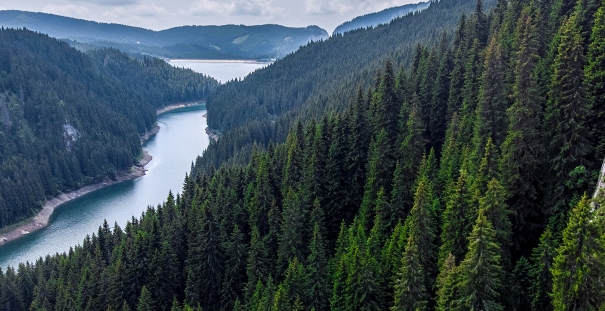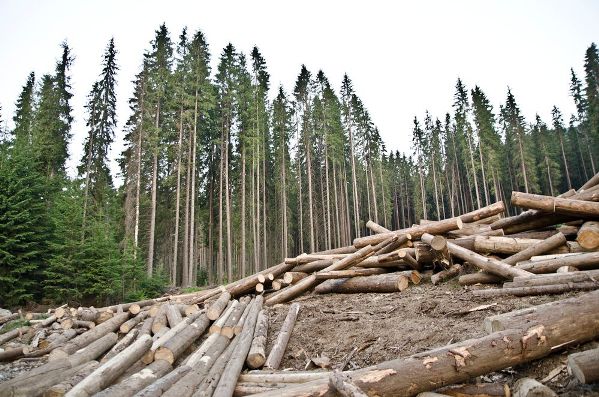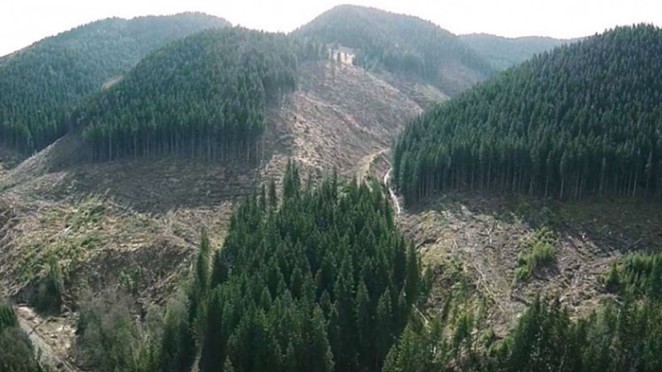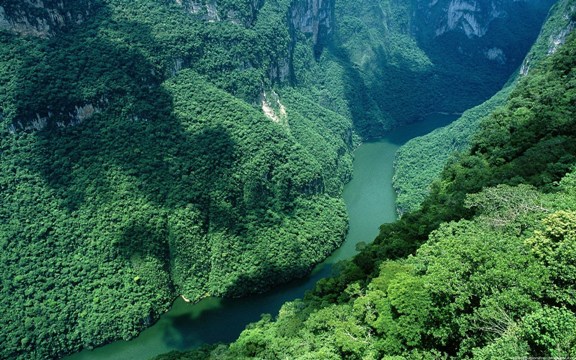More than 100 world leaders have pledged to end deforestation by 2030 in the first major deal at the Glasgow climate summit. Countries that supported the decision include Brazil, Russia, Canada, Colombia, the US, the UK and Indonesia. It is noted that in total these countries account for about 85% of the world’s forests. The agreement includes the allocation of $20 billion, part of which will be used to restore already damaged forest areas and fight forest fires. The governments of 28 countries also pledge to stop deforestation for agricultural production, in particular for the production of palm oil, cocoa and soybeans.
Indonesia is the world’s largest exporter of palm oil, the production of which leads to the destruction of forests and the loss of territories inhabited by indigenous peoples. Russia’s forests account for a fifth of all the planet’s trees and absorb 1.5 billion tons of carbon dioxide annually. The largest rain forests in the world are the Amazon rainforests in Brazil, but in 2020 they were destroyed at a record pace.
Over the five years of implementation of the Russian federal project “Forest Conservation” and the national project “Ecology”, the area of reforestation and afforestation in Russia amounted to 6.3 million hectares. At the same time, in 2023, reforestation was carried out on 1.4 million hectares, which is 6.7% more than last year’s figure, and afforestation was carried out on 5.1 thousand hectares, which is 102% of the annual plan.

It is planned that in 2024, reforestation and afforestation will be carried out on 1.4 million hectares, and the total area in these areas over six years will be 7.7 million hectares. In 2023, it was possible to produce 8.6 tons of seeds with improved characteristics, which is 1.4 times more than in 2022. Seedlings grown from such seeds will significantly improve the quality of restored forests. At the same time, the most seeds with improved characteristics were prepared in the Republic of Adygea – 2.3 tons, the Krasnodar Territory – one ton, the Belgorod Region – almost 0.8 tons, the Republic of North Ossetia-Alania – about 0.6 tons and the Bryansk Region – about 0.5 tons.
Rosleskhoz, together with the Russian Ministry of Natural Resources, is working to include measures to create new and develop existing forest seed production facilities in the federal project “Forest Conservation,” which will be extended until 2030 in order to increase the procurement of seeds with improved characteristics in the future. The use of such seeds in reforestation will lead to a significant increase in the quality of grown forests.
According to the press service of the Russian Ministry of Natural Resources, starting from 2025, within the framework of the federal project “Forest Conservation” they plan to take into account both quantitative and qualitative characteristics of forest restoration, namely the care of forest crops, the creation of favorable conditions for the growth and development of forest plantations.

In Siberian regions, the cleansing capacity of forests is decreasing and there is an emerging shortage of quality wood – these are the consequences of active deforestation. Intensive, full-fledged reproduction of forests and a transition to so-called sustainable resource management are necessary, scientists believe. Specialists from the Krasnoyarsk Scientific Center of the Siberian Branch of the Russian Academy of Sciences presented a report with recommendations, the center said.
Employees of the Institute of Forestry named after. V.N. Sukachev listed the conditions for the transition from the current model of forest resource use to sustainable management. Scientists believe that the existing development model has changed the structure of the forest fund not for the better. A shortage of quality wood and a decline in the ecological function of Siberian forests are already visible in the near future. This is mainly due to actively cutting down coniferous stands, but forest fires, insect pests, and forest diseases also contribute. According to experts, lost reserves are replenished by only a third.
It is necessary to introduce a model of intensive use and reproduction of forests. “Moreover, with proper provision of natural regeneration and effective care of the forest, there is no need to plant new trees to replace those cut down,” says Doctor of Biological Sciences, Director of the Forest Institute. V.N. Sukacheva SB RAS Alexander Onuchin. According to him, replacing cleared hectares with new plantings does not replenish the forests, since a significant part of the planted trees will certainly die. It is more effective to take care of existing wealth. Proper thinning can produce a much greater increase in trees than planting new ones.

In addition, it is important to understand where you can cut and where it is appropriate to plant. “In the north, where trees grow slowly, about 200-300 years, there is little point in introducing modern growing technologies; such forests must perform ecological functions,” says Onuchin. He is confident that it is necessary to grow forests for timber where it grows quickly – in the southern regions. Scientists offer several options for effective forest management. And it is recommended to pay special attention to the creation of experimental farms where advanced technologies can be tested.
The Amazon rainforest may turn into dry grassy savannas as a result of climate change. As TASS reports, Brazilian scientist Carlos Nobre stated this in an interview with the Lusa agency. According to him, the Amazon is very close to the point of no return, because in the south of the region the dry season has become much longer. Previously it lasted three to four months. Today – four to five months. The rainforest is “already a source of emissions” as the planet’s main lungs in the Brazilian states of Pará and Mato Grosso emitted more carbon dioxide than it absorbed.

During the 28th Conference of the Parties to the UN Framework Convention on Climate Change, Brazilian representatives reported that the drought in the equatorial Amazon rainforest region was one of the worst in recent memory. According to a report by the World Resources Institute’s Global Forest Watch published in late June, the area of tropical forest lost worldwide in 2022 was about 4.1 million hectares – about 10% of the total area. It is noted that in 2022, every minute, tropical forests were reduced by an area equal to 11 football fields.
The theme of the UN International Day of Forests 2023 was “Forests and Health”. Forests cover 31 percent of the Earth’s land surface and occupy approximately 4 billion hectares. They play an important role in keeping people healthy – they purify water and air, and sequester carbon. Forests make a huge contribution to poverty reduction. Three quarters of the world’s fresh water comes from forested areas. In addition, forests prevent landslides and soil erosion.
Rapid population growth is increasing global demand for forest products – timber, fibre, fuel, food, feed and medicine. By 2050, demand for wood is expected to triple to 10 billion cubic meters. In addition, global population growth will require increased agricultural production, which will lead to the conversion of forest areas to arable land and will be a major driver of deforestation, especially in tropical and low-income countries.

Already, the world is losing 10 million hectares of forest every year to deforestation—about the size of Iceland. In addition, insects damage about 35 million hectares of forest every year. Overall, about 420 million hectares of forest have been lost since 1990. Deforestation of the Earth is costly to humanity. Deforestation, degradation and fires are causing concern to the entire international community. Deforestation is the second leading cause of climate change after the burning of fossil fuels.
In 2012, the United Nations General Assembly declared March 21 as the International Day of Forests. This day is celebrated to commemorate the importance of all types of forests and to raise awareness about their role and the need to protect them. According to the Food and Agriculture Organization (FAO), more than half of the world’s forests are in five countries: the Russian Federation, Brazil, Canada, the United States and China.




